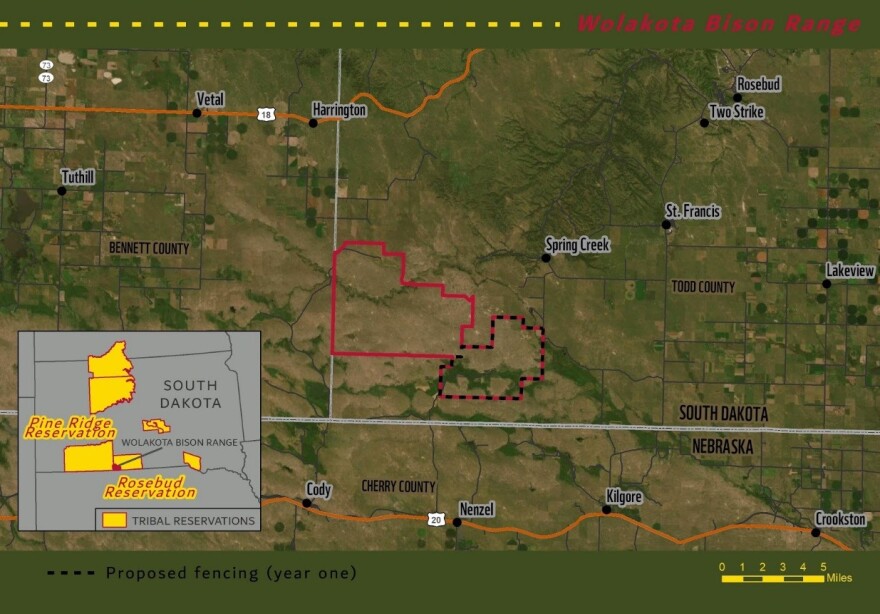The first hooves have hit the ground at a new buffalo range that could eventually host the world’s largest Native American-owned herd.
Wizipan Little Elk, the CEO of the Rosebud Economic Development Corporation, said there’s a deep meaning underlying the project and its Lakota-language name.

“Our project is called ‘Wolakota.’ And what that means in our language is to live the Lakota way of life,” Little Elk said. “Our identity is linked to the health and welfare and well-being of buffalo, and when they’re strong, we’re going to be strong again as well.”
The development corporation is converting 40 square miles of ranchland on the Rosebud Reservation into the Wolakota Buffalo Range.
The corporation is working with the World Wildlife Fund and obtaining excess bison from federal government herds. The first buffalo arrived recently – 50 from Badlands National Park, and 50 from Theodore Roosevelt National Park in North Dakota. The buffalo stayed in holding pens to get acclimated until Friday, when they were released onto the range.
T.J. Heinert, a range assistant with the project, said the arrival of the buffalo was a thrilling event.
“They're a beautiful, majestic animal. They’re huge, they're powerful, and just the meaning, being Native and what they stand for to us, it’s a powerful feeling that you can’t even really explain,” Heinert said. “It’s so electrifying once they're actually there, you’re looking at them, you hear them, you see them move. They’re an amazing animal.”
Rotational grazing will keep the buffalo moving throughout the range. Range Manager Jimmy Doyle said that mimics the way buffalo moved across the plains, and it results in healthier plants, soil, wildlife, and greater carbon sequestration in the ground.
“This will be a really neat opportunity to showcase the ecological benefits of well-managed grazing," Doyle said, “but doing it with the original tool that did it in the first place.”
The corporation wants to grow the herd to 1,500 animals, which corporation leaders say would be the largest bison herd owned by Native Americans. Eventually, some bison will be culled and sold every year. Other plans include a meat processing facility, and educational programs for Lakota youth focusing on the central role of bison in Lakota culture.
-SDPB's Paul Ebsen contributed to this report.

